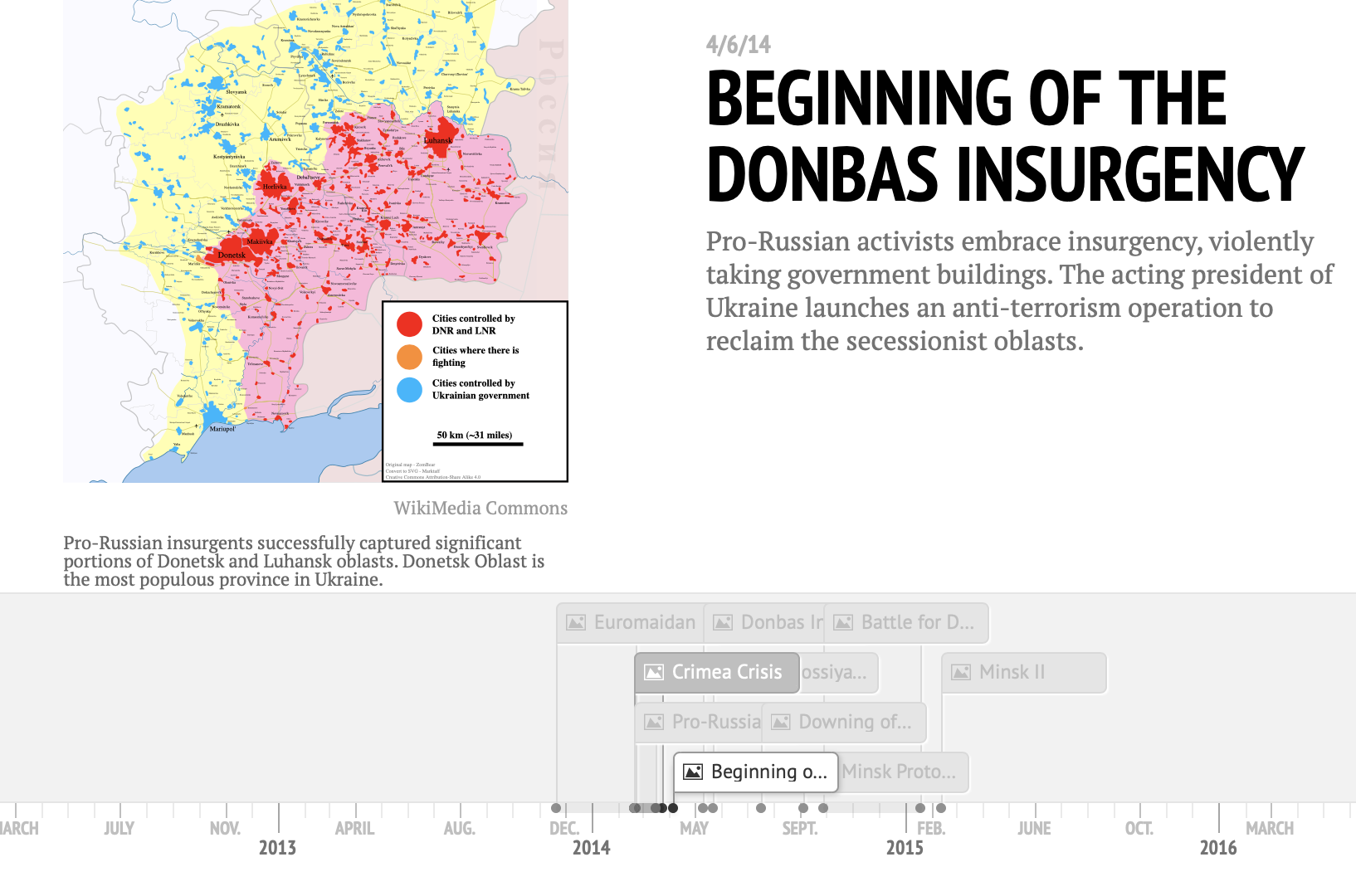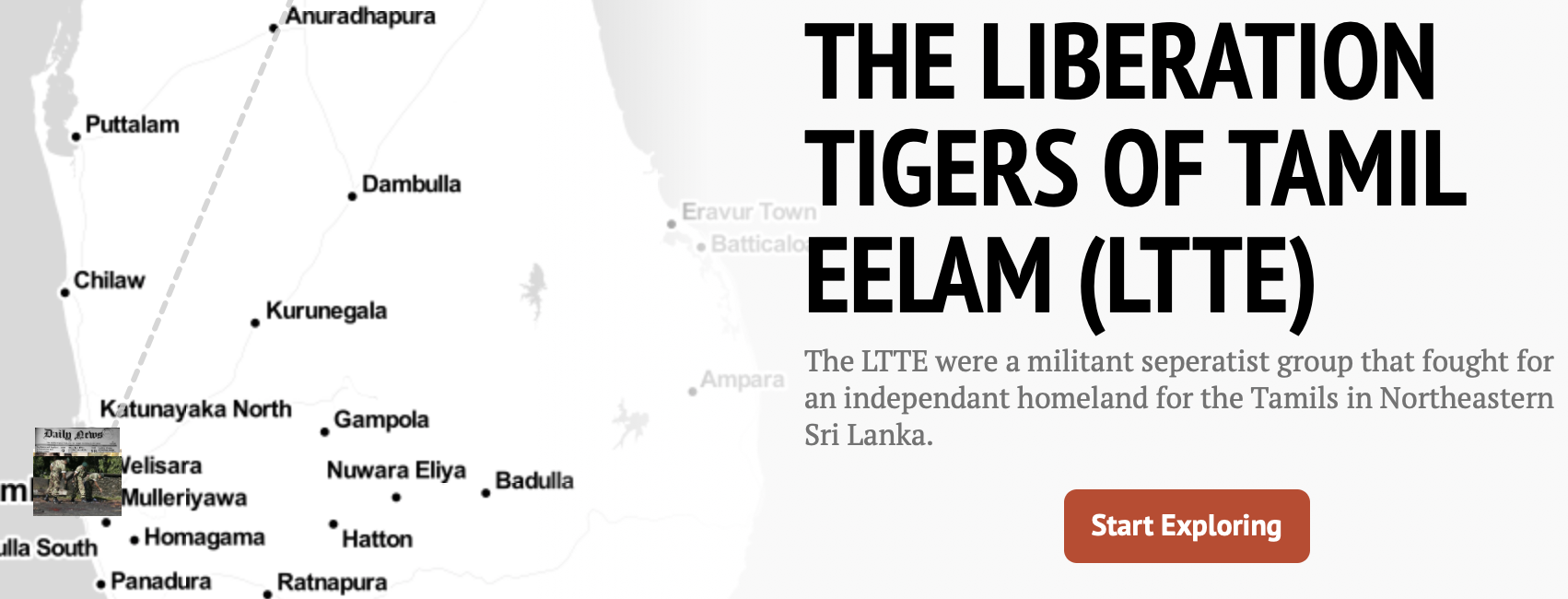TERRORISM & POLITICAL VIOLENCE AROUND THE WORLD
SPRING 2020
Please note: This page is archived from the last time I taught this course.
For materials for current courses, please go to my teaching page.
Welcome to the course page for POL 358, Terrorism & Political Violence Around the World!
This page contains supplemental information and links to course materials.
Syllabus
karreth358-s20.pdfAccess to readings
Please see Canvas for all readings that are not accessible online.Samples of students' research!
With the help of the Digital Liberal Arts program and Christine Iannicelli, students in POL 358 created interactive visualizations of their case research as part of their research project. Each student compared two groups who had, at some point, used violence for political purposes. Click on the images below to explore two sample projects using timelines and storymaps:Adjustments for remote learning during campus closure
How and when will we meet as a class?
We are not going to have a full videoconference version of our class. Many of you and myself have to take care of family members (siblings, children, parents) or internet connectivity issues. Therefore, we cannot guarantee to all be online at the same time. Instead, we will do the following:- I will post materials (readings & videos) and discussion questions (similar to pre-tests) before our scheduled class meetings.
- You will complete surveys before class as usual.
- We will use the tool "Hypothesis" on Canvas to annotate readings before class. Your contributions here count as participation. More information and an access link will soon follow as a participation assignment on Canvas.
- Instead of class discussion, I will post several discussion questions on a Word document shared with the class on Office 365, at the beginning of class time. You can add content as you would in a discussion. The document is open for the rest of the day. Afterward, it will go onto Canvas to document our coursework.
How will we maintain contact?
Close exchange between students and professors is one of the most important parts of our work at Ursinus, so I will try to find an alternative for this, even though it won't replace face-to-face interactions. It is extremely important to me that I speak in person with each of you at least once a week. To do so, you have two options:- Join the Canvas conference during class time via videochat and participate in discussion.
- Meet with me virtually during my meeting times. My contact details will be posted on Canvas.
How can we ask questions about the reading?
We will use the "Hypothesis" tool on Canvas for this purpose. See the in-class participation assignments for each day.I'm new to this and overwhelmed. How can I make this work?
This is a challenge for all of us, and I appreciate your patience and resilience in juggling anxieties and challenges from many sides at this point. My recommendation for this class:- Make a strict schedule for when you can do classwork every day and stick to it. You should spend 12+ hours per week on this class, including regularly scheduled class time.
- Use the syllabus to plan ahead for the bigger milestones (research paper assignment).
- Be patient with yourself, your fellow students, and your instructor.
What happens to deadlines?
I will soon update deadlines on Canvas and post an updated syllabus as well. Sidenote: because the National Model UN conference is cancelled, we "gain" two class meetings and will therefore be able to finish the semester as planned despite the extended spring break.Why are we doing all this? Why can't we be on campus?
Ursinus College is following a directive from the governor of Pennsylvania. The goal of this and other school closures is to flatten the curve and keep our healthcare system functional. For more details, watch my short lecture here.Why did you not take my suggestion from the survey?
Thank you all again for offering great ideas, some of which made it into this email. After discussing with colleagues at Ursinus and other leading universities and colleges, I concluded that sticking to our existing infrastructure (Canvas) as much as possible promises to be the most seamless approach for now. I might get back to some of your suggestions that did not show up here at a later time, though.Once again, thank you for your patience with me, your fellow students, the college, and your fellow human beings. This is a unique situation that is not easy for any of us, and a severe challenge for at least some of us. Please know that we at Ursinus are working as hard as possible to make this setup work for everyone - and we welcome your feedback at any point.

